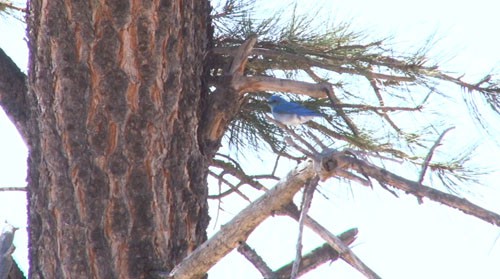Cronkite News has moved to a new home at cronkitenews.azpbs.org. Use this site to search archives from 2011 to May 2015. You can search the new site for current stories.
New ‘average’: Wildfire seasons aren’t what they used to be in Arizona
FLAGSTAFF – As the 35-acre Fisher Point fire burned in a canyon just a few miles south of his office, Coconino National Forest fire information officer Dick Fleishman said he anticipates an average fire season.
But average means something far different than when he started with the U.S. Forest Service 33 years ago. Persistent drought and denser forests make even a routine fire season more severe.
“Twenty years ago, we would have said Fisher Point was large,” he said.
Arizona’s wildfire season is at its peak from May through July. High winds, hot temperatures and low precipitation can extend or worsen the season, Fleishman said.
“The real hard fire season is when it’s hot, dry and windy all at once,” he said.
The whole state faces these conditions in varying degrees this year, said Carrie Dennett, state fire prevention and information officer at the Arizona State Forestry Division.
She said southeastern Arizona has already had several wildfires. The state as a whole is preparing for an average fire season, Dennett said, but there’s no clear definition of just what average is.
“The last 10 years of fire history that we’ve had in the United States have kind of redefined what fire is,” she said. “Average or normal is kind of a moving target”
Most predictions are just educated guessing, she said.
“It’s taking past history and current conditions and then making inferences about where we’re going,” she said.
These predictions are handled on the federal level by the Southwest Coordination Center in Albuquerque, N.M. The center bases its seasonal fire predictions on five factors: droughts, fine fuels condition, seasonal temperatures, spring and early summer weather patterns and monsoons.
It expects the long-term drought across the Southwest to worsen during the summer. Despite the drought, Arizona’s wet 2012 monsoons and a wetter winter could lead to more new growth, providing fine fuels.
Overall, the center expects southeastern Arizona to see above-normal potential for fires from May to June. The northwestern parts of the state will likely see higher fire potential in June and July.
This coincides with Arizona’s prime hiking and camping season. Michelle Fidler, fire communication and education specialist at the National Park Service, said campers just need to be careful.
“The most important thing is to check local conditions,” she said. “Check with the local ranger office to see if wildfires are in the area and to see what different restrictions are.”
Fireworks are banned at all times on federal lands, and restrictions on campfires and other fire hazards vary from park to park.
In Flagstaff, officials focus on education. The region expects a dry and windy summer, but determining how bad the season will actually be depends on the number of fires.
People cause almost all fires that start before the summer monsoon season brings lightning, said Mark Brehl, wildland fire leadworker at the Flagstaff Wildland Fire Management office.
The most common cause is improperly extinguishing campfires, but cigarettes, the use of power tools and even sparks from chains on trailers can ignite fires.
“We encourage people to be safer when they’re out in the woods,” Brehl said. “No one wants to be responsible for starting a large fire that burns homes and destroys lives, so we really encourage people to be cautious this year.”
While Flagstaff’s greatest natural threat is wildfire, Brehl said the area around the city is relatively safe because of aggressive efforts to restore the forest to its natural state. These include prescribed burning, or starting smaller, controlled fires to clear out brush and dead plants that serve as fuel.
Keeping fires away from developed areas is crucial because fighting them becomes far more complicated when they approach areas where buildings meet forest, Fleishman said.
“It’s like real estate,” he said. “It’s location, location, location.”
Fires that get too close to settled areas shift firefighters’ focus from containing the fire to protecting buildings, he said.
For Brehl, keeping the state safe from dangerous fires is simple.
“If you have any doubt about having a fire, don’t have one,” he said. “You can still enjoy the forest without having a fire.”
EDITOR’S NOTE: Cronkite NewsWatch reporter Kelsea Wasung contributed to this report.










